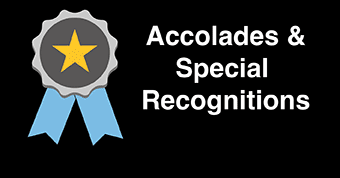Literature Reviews: A Guide
The Basics:
In a literature review, a researcher presents the dominant topics in a scholarly conversation on a given subject. More than just summarizing, a literature review engages in synthesis, or the layering of many sources, to illustrate patterns across the research. So, rather than describe one source in its entirety, move on to describe another source in its entirety, and so on, the writer will break their literature review up by themes that emerge across sources, or they may trace the scholarly conversation over time.
Some literature reviews may be done as standalone exercises—a step in the research process to familiarize the researcher with the topic. Others come as a section within a larger academic paper designed to argue a particular point or achieve some other goal. As always, if you’re working on a literature review as part of a class, you should consult your instructor’s assignment description, as your instructor might have additional expectations.
Generally, the audience for a literature review consists of academics in that field, or at least those who are interested in the particular topic. As a result, you can assume that words or phrases commonly used in the field will be familiar to your audience. You will also want to stick to a neutral tone: Present the research fairly, without imbuing it with emotion (although reasoned criticisms of prior studies can be one or the focus of a literature review).
Rhetorical Moves:
Rhetorical moves, or just moves, are particular strategies writers use to accomplish different goals in their writing. Some moves are obligatory, meaning that they must be made for a work to fit its genre; in other words, without these moves, the audience may fail to understand the purpose of the text or even recognize the text as fitting into its intended genre. Other moves are optional, meaning that a writer may choose whether to make them; in other words, while they might help a particular text achieve its purpose, omitting them won’t necessarily cause the text to fail. (For example, an obligatory move in assembling a shopping list is the naming of items needed, while an optional move may be the identification of a particular brand or maximum price.)
- Include an introduction to your piece that effectively conveys your thesis or goal and the ideas you plan to explore.
- Remember: Since a literature features synthesis, not summary, it won’t be enough to just quote and paraphrase your sources. You need to use your own voice to weave them together and show how they’re related, how they contribute to the research patterns. Some questions you might seek to answer:
- Does any of the research I’ve encountered cite other sources I’ve found? What do they say about one another?
- What themes or commonalities do I notice across sources?
- Have any of these themes or commonalities shifted over time?
- Do any authors disagree or agree with one another? On what topics? How common are these (dis)agreements?
- How do the researchers build on or detract from points made by others?
- Make clear the significance of your topic: Why does it matter?
- Show that your own work is topical to past research, meaning the topic of your research is connected to the topics of the research you are using. (More common in literature reviews that come as part of larger projects than in standalone literature reviews.)
- Do not just focus upon the newest research. Provide your readers with a comprehensive history of the topic..
- Depending on your field, you may need to avoid the first person and instead express your thoughts in the passive voice or third person.
- Divide the research by different types of examples: historical, theoretical, and observational.
- Show any research or findings that conflict with your topic at hand.
- Critique any past research that may be subject to outdated ideologies or incorrect research.
Steps to take
Here are some steps you should take to write a literature review:
-
Consult your instructor’s assignment description and earlier feedback if available.
Make sure you understand the particulars of your literature review and your instructor’s expectations, including specific sections to include (if any) and which moves may be obligatory and which may be optional. If you have feedback from your instructor on earlier drafts or similar writing assignments, revisiting that feedback can help clarify expectations. If you have any questions, you should talk with a classmate and your instructor. This will give a foundation of what your professor is looking for in your assignment and your audience.
-
Establish an idea.
Try to establish an idea of what the topic of your literature review is, in order to gain an initial understanding of what you will be writing about. If you are unsure, then begin to research topics that interest you: As you move through this cursory research, you may detect patterns or holes in the research that you’d like to make the focus of your own work.
-
Find research that conflicts and correlates with the separate conclusions of your topic.
This will allow you to illustrate the common themes of your topic. Begin to point out common themes within the research. Write down notes when doing so. Annotating and taking notes while reading and researching may be a good way to ensure you understand, collect, and retain the most important information.
-
Develop a thesis/argument/claim if your instructor’s assignment calls for one.
This will assist you by making sure your paper centers around this idea (staying on topic). It is supposed to make you and the audience aware of the point you are trying to make in your review.
-
Organize your ideas and start drafting your review.
This can be done through creating an outline of your paper by making general notes and sentences that can be expanded later.
How to work with a Writing Center tutor on a Literature Review
No matter how you’re feeling about the assignment at hand, whether confident or not, you can benefit from consulting a Writing Center tutor. Please:
- Come early in the writing process. Don’t wait until you have a complete draft! In fact, you don’t even have to have written anything. Once you have a focus, main point, or plan of attack or outline for your literature review, come talk it through with a tutor.
- Come back at different stages of the writing process. Again, come talk with a tutor well before you’ve finished drafting your literature review. Try working with a tutor once you’ve written a couple paragraphs or sections. The tutor can help you identify moves that are working and how to keep them up, as well as those that aren’t working and how you can tweak them as you continue drafting.
This genre guide was written by
Hannah Gayda, Taina Altagracia-Paris, and Eamon Joyce
With guidance from
Edward Horan, Writing Center Coordinator; Ted Alter, Associate Professor of Social Work; Helana Girgis, Assistant Professor of Psychology; Kate Kafonek, Assistant Professor of Criminal Justice; Z. Lacey, Associate Professor of Marine Science; Maya Lewis, Associate Professor of Social Work; Sara Martino, Professor of Psychology
Works Consulted
McCombes, S. (2023, January 2). How to write a literature review. Scribbr. https://www.scribbr.com/methodology/literature-review/
Pautasso, M. (2013). Ten simple rules for writing a literature review. PLoS Computational Biology, 9(7), n.p. 10.1371/journal.pcbi.1003149.
Pros Write (2014, February 24). The genre of research articles: The literature review section. https://proswrite.com/2014/02/24/the-genre-of-research-articles-the-literature-review-section/
Purdue Online Writing Lab (n.d.). Writing a literature review. Purdue University. https://owl.purdue.edu/owl/research_and_citation/conducting_research/writing_a_literature_review.html
The Writing Center (n.d.). Literature reviews. University of North Carolina at Chapel Hill. https://writingcenter.unc.edu/tips-and-tools/literature-reviews/


